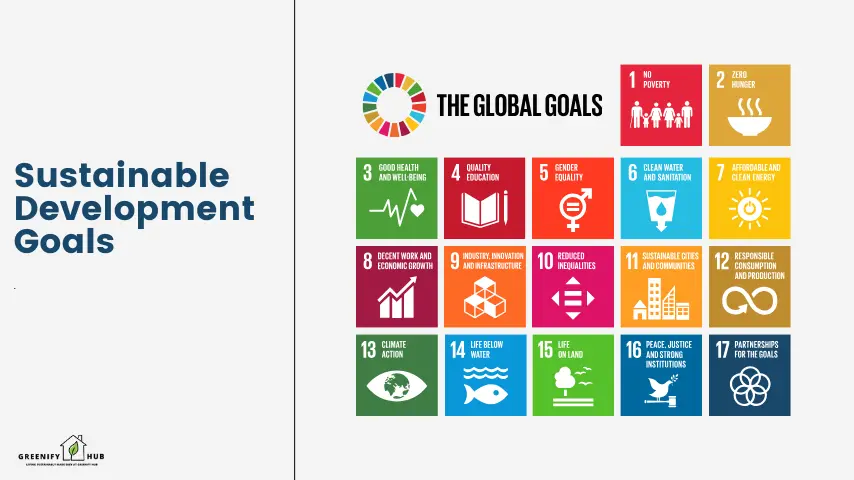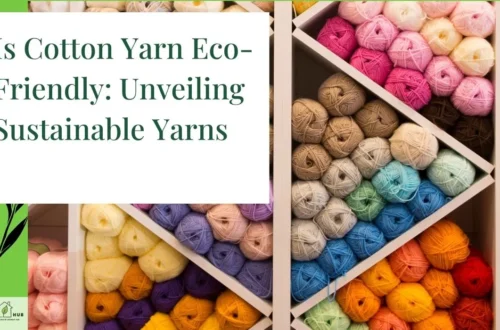Conservation and Sustainability: 10 Key Differences That Shape Our Planet’s Future

Conservation and sustainability are two crucial approaches to environmental protection. But what exactly do these terms mean, and how do they differ?
Conservation focuses on preserving and protecting natural resources and ecosystems. It’s about maintaining the delicate balance of our planet’s biodiversity.
Sustainability, on the other hand, looks at the bigger picture. It’s about meeting our present needs without compromising the ability of future generations to meet theirs.
Think of it this way: conservation is like preserving a pristine forest, while sustainability is ensuring we can use wood products without depleting all our forests.
Both approaches are vital for our planet’s future. They work hand in hand to create a world where nature thrives and human needs are met responsibly.
Let’s dive deeper into the history and evolution of these important environmental approaches.
Historical Context of Conservation
Conservation efforts have a rich history dating back centuries. However, it wasn’t until the late 19th century that conservation became a dedicated organization movement.
One of the pioneers was John Muir, who founded the Sierra Club in 1892. His efforts led to the protection of Yosemite Valley and Sequoia National Forest.
Another key figure was Gifford Pinchot, the first Chief of the U.S. Forest Service. He championed the idea of “wise use” of natural resources.
These early conservation efforts laid the groundwork for modern environmental protection strategies.
Conservation has evolved from individual efforts to organized movements, shaping our approach to protecting natural resources.
Evolution of Sustainability
The concept of sustainability gained traction in the late 20th century. It emerged as a response to growing concerns about resource depletion and environmental degradation.
A pivotal moment came in 1987 with the Brundtland Report. This UN document defined sustainable development as meeting “the needs of the present without compromising the ability of future generations to meet their own needs.”
This definition shifted the focus from mere conservation to a more holistic approach. It considered environmental, social, and economic factors in creating a sustainable future.
Since then, sustainability has become a global goal. It’s now a key consideration in policy-making, business strategies, and individual lifestyle choices.
Sustainability evolved from a niche concept to a global imperative, balancing present needs with future considerations.
RELATED: Mastering the 4 Pillars of Sustainability: Your Comprehensive Guide to a Sustainable Future
Key Principles of Conservation
Conservation is rooted in four main principles. These guide efforts to protect our planet’s natural habitats and ecological assets.
Let’s explore each of these principles and how they contribute to environmental protection.
Ecosystem Maintenance
Ecosystem maintenance is about preserving the delicate balance of nature. It involves protecting entire ecosystems, not just individual species.
For example, conserving a wetland isn’t just about saving frogs. It’s about maintaining the complex web of life that depends on that habitat.
This principle often involves careful land use planning. It might mean setting aside areas as nature reserves or restricting certain activities in sensitive areas.
Ecosystem maintenance focuses on preserving the intricate balance of entire natural habitats.
Species Protection
Species protection is perhaps the most well-known aspect of conservation. It involves safeguarding individual species from extinction.
This principle is crucial in global biodiversity hotspots. These are areas with a high concentration of unique species facing significant threats.
For instance, efforts to protect the giant panda in China involve not just the animals themselves, but also their bamboo forest habitat.
Species protection aims to prevent extinction and maintain biodiversity by safeguarding individual species and their habitats.
Resource Management
Resource management is about using natural resources wisely. It ensures we don’t deplete resources faster than they can be replenished.
This principle applies to renewable resources like forests and fisheries. It also covers non-renewable resources like minerals and fossil fuels.
For example, sustainable fishing practices set quotas to prevent overfishing. This ensures fish populations can recover and remain viable for future generations.
Resource management aims to use natural resources sustainably, balancing human needs with ecological limits.
Ecosystem Restoration
Ecosystem restoration focuses on repairing damaged or degraded ecosystems. It’s about giving nature a helping hand to recover.
This conservation effort can involve replanting forests, cleaning up polluted waterways, or reintroducing native species.
For instance, the restoration of the Everglades in Florida aims to reverse decades of drainage and development. This massive project is restoring water flow and reviving this unique ecosystem.
Ecosystem restoration actively works to repair and revitalize damaged ecological assets.
RELATED: Mastering the Three Es of Sustainability: A Comprehensive Guide for Businesses
Fundamental Concepts of Sustainability
Sustainability is built on four fundamental pillars. These concepts guide our efforts towards a more sustainable future.
Let’s explore each of these pillars and how they contribute to our sustainability goals.
Ecological Balance
Ecological balance is about living within our planet’s means. It recognizes that Earth has planetary boundaries we must respect.
This concept involves understanding our ecological footprint. That’s the impact our lifestyle has on the environment.
For example, choosing to cycle instead of drive reduces your carbon footprint. It’s a small step towards ecological balance.
Ecological balance aims to align human activities with the Earth’s capacity to sustain them.
Social Equity
Social equity is the human side of sustainability. It’s about ensuring fair access to resources and opportunities for all.
This principle recognizes that environmental issues often disproportionately affect disadvantaged communities.
For instance, efforts to provide clean water in developing countries contribute to both human development and environmental sustainability.
Social equity ensures that sustainability efforts benefit all members of society, promoting fairness and inclusivity.
Economic Viability
Economic viability is about creating sustainable economic systems. It challenges the traditional focus on gross domestic product as the primary measure of progress.
This principle encourages considering environmental and social costs in economic decisions.
For example, a country might choose to invest in renewable energy. This could be more expensive initially but more sustainable in the long run.
Economic viability promotes economic systems that balance profitability with environmental and social responsibilities.
Reducing Environmental Impact
Reducing environmental impact is about minimizing our negative effects on the planet.
This principle focuses on reducing pollution, conserving resources, and mitigating climate change.
For instance, companies might set goals to reduce their carbon emissions. This could involve using renewable energy or improving energy efficiency.
Reducing environmental impact aims to minimize harmful effects of human activities on the environment.
RELATED: Unleashing Cultural Sustainability: 12 Key Strategies for Thriving Communities
10 Key Differences Between Conservation and Sustainability
While conservation and sustainability are both important environmental approaches, they have distinct characteristics. Let’s explore 10 key differences between these two concepts.
1. Focus and Scope
Conservation primarily focuses on protecting and preserving specific natural resources or ecosystems. It’s about safeguarding what we already have.
Sustainability, however, has a broader scope. It aims for sustainable development across all aspects of society.
For example, conserving a forest is about protecting that specific ecosystem. Sustainable forestry, on the other hand, looks at how we can use forest resources responsibly over the long term.
Conservation targets specific resources or areas, while sustainability encompasses a broader, holistic approach to development.
2. Timeline and Perspective
Conservation often deals with immediate threats and short-term goals. It’s about taking action now to prevent further damage.
Sustainability takes a long-term view. It considers how our actions today will affect future generations.
For instance, a conservation effort might focus on preventing the extinction of a species today. A sustainability goal might involve creating policies that ensure species protection for decades to come.
Conservation often addresses immediate concerns, while sustainability focuses on long-term, intergenerational impacts.
3. Resource Utilization
Conservation typically aims to minimize or prevent resource use, especially in protected areas. It’s about leaving natural resources untouched where possible.
Sustainability focuses on responsible resource use. It seeks ways to meet human needs while ensuring resources remain available for the future.
For example, a conservation approach might prohibit logging in an old-growth forest. A sustainable approach might allow selective logging that maintains the forest’s overall health.
Conservation often restricts resource use, while sustainability promotes responsible utilization.
4. Human Involvement
Conservation often seeks to limit human activity in natural areas. It aims to protect nature from human interference.
Sustainability recognizes that human activity is inevitable. It seeks ways for humans and nature to coexist harmoniously.
For instance, a marine conservation area might ban fishing entirely. A sustainable fishing program would set catch limits to maintain fish populations while supporting local communities.
Conservation often limits human activity, while sustainability seeks to balance human needs with environmental protection.
5. Economic Considerations
Conservation typically prioritizes ecological value over economic value. It might advocate for protecting an area even if it means forgoing economic opportunities.
Sustainability aims to balance environmental protection with economic development. It seeks solutions that are both environmentally friendly and economically viable.
For example, conservation efforts might oppose building a resort in a pristine area. A sustainable approach might explore eco-tourism options that benefit the local economy while minimizing environmental impact.
Conservation often prioritizes ecology over economy, while sustainability seeks to balance both.
6. Technological Integration
Conservation often relies on traditional methods and natural processes. It might focus on preserving ecosystems in their current state.
Sustainability embraces new technologies and innovative solutions. It looks for new ways to reduce environmental impact while meeting human needs.
For instance, conservation efforts might focus on manually removing invasive species. A sustainable approach might use drones for more efficient monitoring and targeted removal.
Conservation often relies on traditional methods, while sustainability embraces technological innovations.
7. Measurement and Metrics
Conservation success is often measured in terms of species populations, habitat area preserved, or reduction in threats.
Sustainability uses more complex metrics. These might include ecological footprint accounting measures or global hectare calculations.
For example, a conservation project might measure success by the increase in a protected species’ population. A sustainability initiative might use a combination of environmental, social, and economic indicators.
Conservation often uses straightforward ecological metrics, while sustainability employs more complex, multifaceted measurements.
8. Policy Approaches
Conservation policies often focus on creating protected areas or species-specific regulations.
Sustainability policies tend to be more comprehensive. They might use frameworks like the planetary boundaries to guide decision-making across various sectors.
For instance, a conservation policy might establish a national park. A sustainability policy might set targets for reducing carbon emissions across an entire country.
Conservation policies often focus on specific protections, while sustainability policies tend to be more comprehensive and far-reaching.
9. Global vs. Local Focus
Conservation efforts often focus on specific local areas, particularly global biodiversity hotspots.
Sustainability takes a more global perspective. It recognizes that environmental issues often transcend local boundaries.
For example, efforts to protect a specific coral reef would be a conservation initiative. Policies to reduce global plastic pollution in oceans would be a sustainability approach.
Conservation often has a local focus, while sustainability takes a more global perspective.
10. Adaptability to Change
Conservation strategies often aim to maintain ecosystems in their current or historical state.
Sustainability recognizes that change is inevitable. It seeks to create resilient systems that can adapt to challenges like climate change.
For instance, a conservation approach might try to maintain a specific forest composition. A sustainability approach might focus on ensuring the forest can adapt to changing climate conditions.
Conservation often aims to maintain current conditions, while sustainability focuses on creating adaptable, resilient systems.
RELATED: 4 Game-Changing Sustainable Business Practices for Lasting Impact
The Interplay Between Conservation and Sustainability
While we’ve explored the differences between conservation and sustainability, it’s crucial to understand that these approaches are not mutually exclusive. In fact, they often work together as part of a comprehensive sustainability effort.
Conservation provides the foundation for sustainability. By protecting critical ecosystems and species, conservation efforts ensure we have the natural resources needed for sustainable development.
Sustainability, in turn, provides a framework for long-term conservation. It helps us find ways to meet human needs while preserving nature.
Think of it like this: conservation is like saving money in a bank, while sustainability is like managing your finances for long-term stability.
Both approaches are essential for addressing our global environmental challenges.
Case Study: Reforestation Efforts
Reforestation efforts provide a perfect example of how conservation and sustainability work together.
From a conservation perspective, reforestation helps restore lost habitats and protect biodiversity. It’s about bringing back what was lost.
From a sustainability angle, reforestation is about more than just planting trees. It considers land use patterns, community needs, and long-term forest management.
For instance, the Trillion Tree Campaign combines conservation goals (restoring forests) with sustainability principles (involving local communities, considering economic factors).
This approach not only restores ecosystems but also provides sustainable livelihoods and helps mitigate climate change.
Conservation and sustainability are complementary approaches, working together to protect nature and ensure long-term environmental health.
RELATED: Economic Sustainability Unveiled: 10 Key Principles for a Thriving Future
Implementing Sustainability in Business
Businesses play a crucial role in achieving sustainability goals. Many companies are now integrating sustainability into their core strategies.
This shift goes beyond just reducing carbon emissions. It involves rethinking entire business models to align with sustainability principles.
For example, some companies are adopting circular economy models. These aim to eliminate waste and maximize resource use efficiency.
Others are focusing on sustainable supply chains. This ensures their products are environmentally friendly from production to disposal.
Implementing sustainability in business isn’t just good for the planet. It often leads to cost savings, improved brand image, and new market opportunities.
Sustainable E-commerce Practices
E-commerce presents unique sustainability challenges and opportunities.
On one hand, online shopping can lead to increased packaging waste and transportation emissions. On the other, it can reduce the need for physical stores and individual shopping trips.
Sustainable e-commerce practices aim to minimize these negative impacts while maximizing the benefits.
For instance, some companies use AI to optimize delivery routes, reducing fuel consumption. Others are experimenting with reusable packaging systems.
Many e-commerce platforms now offer carbon-neutral shipping options. These offset the emissions from delivery by investing in environmental projects.
Businesses are increasingly integrating sustainability into their operations, recognizing it as both an environmental imperative and a business opportunity.
RELATED: 10 Essential Steps to Mastering Social Sustainability: Transform Your Business and Society
The Role of Valuation in Conservation and Sustainability
Valuation plays a crucial role in both conservation and sustainability efforts. It helps us understand and quantify the diverse values of nature.
These values go beyond just economic considerations. They include ecological, cultural, and intrinsic values as well.
Various valuation methods are used to capture these different aspects. These might include market-based approaches, contingent valuation, or ecosystem service assessments.
For example, a forest’s value isn’t just in its timber. It also includes its role in carbon sequestration, water regulation, and biodiversity support.
Understanding these diverse values helps inform decision-making in both conservation and sustainability initiatives.
Importance of Diverse Values of Nature
Recognizing the diverse values of nature is crucial for effective conservation and sustainability efforts.
Economic values are often the easiest to quantify. But focusing solely on these can lead to overlooking other important aspects of nature.
For instance, a wetland might not have high economic value in terms of developable land. But its value in flood protection, water purification, and wildlife habitat could be immense.
Incorporating nature’s diverse values into decision-making helps create more holistic and effective environmental policies.
It also helps build broader support for conservation and sustainability initiatives. When people understand nature’s full value, they’re more likely to support efforts to protect it.
Valuation methods that capture the diverse values of nature are essential for informed decision-making in conservation and sustainability efforts.
Global Initiatives and Frameworks
Several global initiatives and frameworks guide conservation and sustainability efforts worldwide.
These provide common goals and standards for countries, businesses, and organizations to work towards.
One of the most comprehensive is the planetary boundaries framework. This identifies nine critical environmental thresholds that, if crossed, could lead to irreversible changes in Earth’s systems.
Another crucial framework is the UN Sustainable Development Goals (SDGs). These 17 interconnected goals address global challenges including poverty, inequality, climate change, and environmental degradation.
These global frameworks help align efforts across different sectors and regions, creating a coordinated approach to environmental challenges.
UN Sustainable Development Goals
The UN Sustainable Development Goals (SDGs) represent a global call to action for sustainable development.
Adopted in 2015, these 17 goals cover a wide range of issues. They include everything from ending poverty and hunger to ensuring clean energy and responsible consumption.
The SDGs recognize that environmental sustainability is intrinsically linked to human development. You can’t achieve one without the other.
For example, Goal 13 focuses on climate action. But this goal is connected to others like clean energy (Goal 7) and sustainable cities (Goal 11).
These goals provide a roadmap for governments, businesses, and individuals to work towards a more sustainable future.
Global initiatives and frameworks like the SDGs provide a shared vision and coordinated approach to addressing environmental and social challenges.

Challenges in Balancing Conservation and Sustainability
Balancing conservation and sustainability is not without its challenges. It requires navigating complex trade-offs between human needs and environmental protection.
One major challenge is the increasing pressure on natural resources due to population growth and rising consumption. This makes it harder to conserve pristine areas while meeting human needs.
Climate change adds another layer of complexity. It’s altering ecosystems faster than many conservation strategies can adapt.
There’s also the challenge of reconciling short-term economic interests with long-term sustainability goals. For instance, a country might face pressure to exploit its forests for immediate economic gain, even if it’s unsustainable in the long run.
Moreover, global issues often require global solutions. But coordinating efforts across different countries with varying priorities can be difficult.
Despite these challenges, finding this balance is crucial for our planet’s future. It requires innovative thinking, collaboration, and a willingness to make tough choices.
Balancing conservation and sustainability is a continuous and evolving process that necessitates ongoing dialogue, research, and action. It calls for a shift towards more sustainable practices in industries, policies, and individual behaviors.
RELATED: Environmental Sustainability Unveiled: Key Concepts Shaping Our Future
Conclusion
As we’ve explored the key differences between conservation and sustainability, it’s clear that both approaches play crucial roles in shaping our planet’s future. While conservation focuses on protecting and preserving our natural resources and ecosystems, sustainability aims to balance environmental, social, and economic needs for long-term viability. By understanding these distinctions, we can better appreciate the complementary nature of these strategies and their collective impact on our world.
Moving forward, it’s essential to integrate both conservation and sustainability principles in our daily lives, businesses, and global initiatives. By doing so, we can address pressing environmental challenges while ensuring a thriving planet for future generations. Remember, every action counts – from supporting conservation efforts to adopting sustainable practices in your community or workplace.
As we face unprecedented environmental challenges, let’s embrace the power of conservation and sustainability to create a more resilient and harmonious world. Together, we can make a significant difference in preserving our planet’s ecological balance while meeting the needs of present and future generations.





